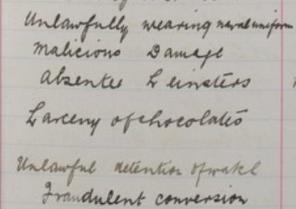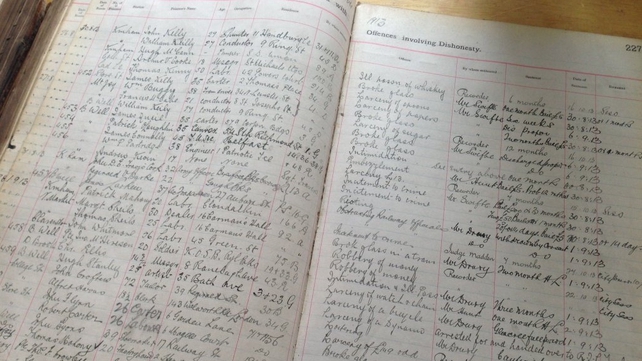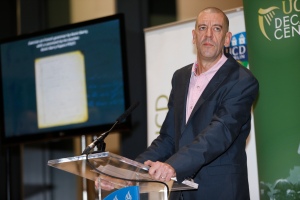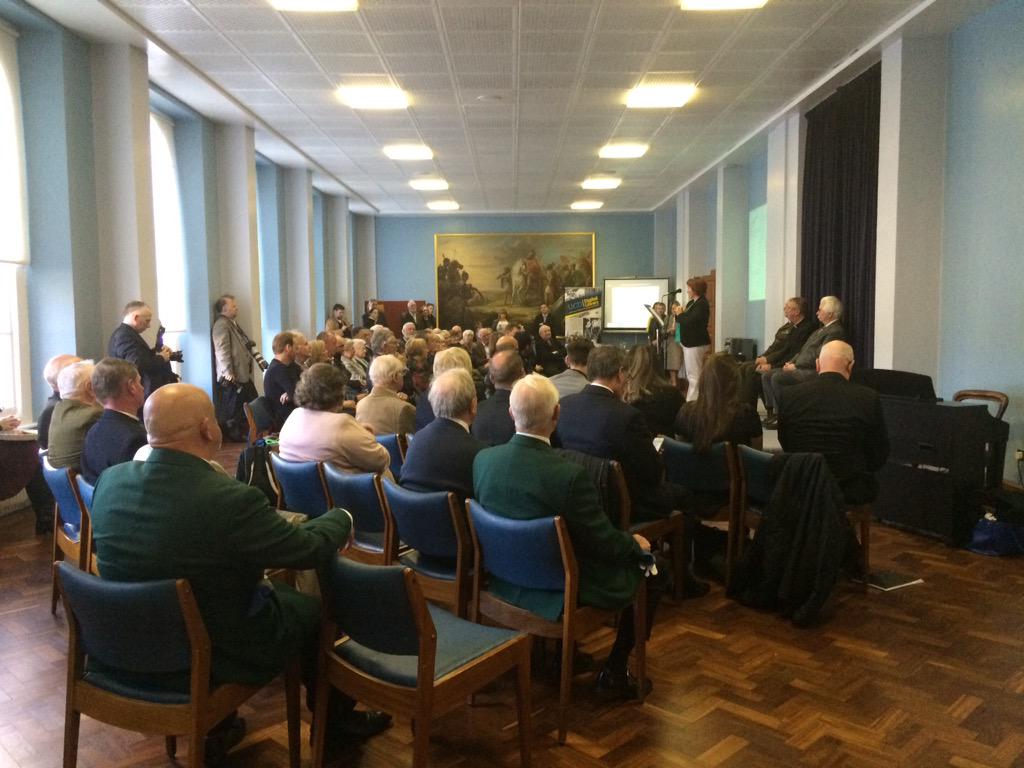By the early seventies, therewas an ominous arrearage of uncataloged material waiting on herdsof rolling carts near the overtaxed cataloging departments of mostlarge libraries. Cataloging had reached a state of crisis
- Feb 2024
-
Local file Local file
-
-
news.virginia.edu news.virginia.edu
-
The information neatly typed on the cards – which library workers sometimes supplemented with handwritten notes on front and back – includes details that in many cases are not typically part of the electronic catalog system, Virgo, that the University Library switched to in 1989. At the time, the catalog was transferred by scanning that captured only the front of the cards.
Libraries may have handwritten notes on the back of library card catalog cards in the 20th century, a practice which caused data loss in the case of the Alderman Library which only scanned the front of their cards in 1989 when they made the switch from physical cards to a digital catalog.
-
Created over a 50-year span from 1939 to 1989, that catalog grew to about 4 million cards in 65 cabinets with 4,000 drawers.
This is roughly 65 cabinets of 60 drawers each.
4 million cards over 50 years is approximately 220 cards per day. This isn't directly analogous to my general statistics on number of notes per day for individual people's excerpting practice, but it does give an interesting benchmark for a larger institution and their acquisitions over 50 years. (Be sure to divide by 3 for duplication over author/title/subject overlap, which would be closer to 73 per day)
Shifted from analog cards to digital version in 1989.
-
- Nov 2023
-
www.loc.gov www.loc.gov
-
In December 1998, the Andrew W. Mellon Foundation awarded the Library of Congress a grant to support a two-year project to digitize the Hannah Arendt Papers manuscript collection. The staff of the Manuscript Division at the Library administered the project, with assistance from the National Digital Library Program (NDLP) and in cooperation with the New School University in New York City.
-
- Jun 2023
- Feb 2023
-
www.bl.uk www.bl.uk
-
1478-1518, Notebook of Leonardo da Vinci (''The Codex Arundel''). A collection of papers written in Italian by Leonardo da Vinci (b. 1452, d. 1519), in his characteristic left-handed mirror-writing (reading from right to left), including diagrams, drawings and brief texts, covering a broad range of topics in science and art, as well as personal notes. The core of the notebook is a collection of materials that Leonardo describes as ''a collection without order, drawn from many papers, which I have copied here, hoping to arrange them later each in its place according to the subjects of which they treat'' (f. 1r), a collection he began in the house of Piero di Braccio Martelli in Florence, in 1508. To this notebook has subsequently been added a number of other loose papers containing writing and diagrams produced by Leonardo throughout his career. Decoration: Numerous diagrams.
-
- Jan 2023
-
docdrop.org docdrop.org
-
The LibNFT Project: Leveraging Blockchain-Based Digital Asset Technology to Sustainably Preserve Distinctive Collections and Archives
CNI Fall 2022 Project Briefings
K. Matthew Dames, Edward H. Arnold Dean, Hesburgh Libraries and University of Notre Dame Press, University of Notre Dame, President, Association of Research Libraries
Meredith Evans, President, Society of American Archivists
Michael Meth, University Library Dean, San Jose State University
Nearly 12 months ago, celebrities relentlessly touted cryptocurrency during Super Bowl television ads, urging viewers to buy now instead of missing out. Now, digital currency assets like Bitcoin and Ethereum are worth half what they were this time last year. We believe, however, that the broader public attention on cryptocurrency’s volatility obscures the relevance and applicability of non-fungible tokens (NFTs) within the academy. For example, Ingram has announced plans to invest in Book.io, a company that makes e-books available on the blockchain where they can be sold as NFTs. The famed auction house Christie’s launched Christie’s 3.0, a blockchain auction platform that is dedicated to selling NFT-based art, and Washington University in St. Louis and the University of Wyoming have invested in Strike, a digital payment provider built on Bitcoin’s Lightning Network. Seeking to advance innovation in the academy and to find ways to mitigate the costs of digitizing and digitally preserving distinctive collections and archives, the discussants have formed the LibNFT collaboration. The LibNFT project seeks to work with universities to answer a fundamental question: can blockchain technology generally, and NFTs specifically, facilitate the economically sustainable use, storage, long-term preservation, and accessibility of a library’s special collections and archives? Following up on a January 2022 Twitter Spaces conversation on the role of blockchain in the academy, this session will introduce LibNFT, discuss the project’s early institutional partners, and address the risks academic leaders face by ignoring blockchain, digital assets, and the metaverse.
-
- Dec 2022
-
www.robinsloan.com www.robinsloan.com
-
I want to insist on an amateur internet; a garage internet; a public library internet; a kitchen table internet.
Social media should be comprised of people from end to end. Corporate interests inserted into the process can only serve to dehumanize the system.
Robin Sloan is in the same camp as Greg McVerry and I.
-
- Nov 2016
-
digital.ucd.ie digital.ucd.ie
-
‘Loreto 1916’ – A new online exhibition & digital collection. UCD Library Blog https://ucdlib.wordpress.com/2016/11/23/loreto-1916-a-new-online-exhibition-digital-collection/
-
- Jul 2016
-
books.google.ca books.google.ca
-
Page 17
Borgman argues that the term Digital Library causes trouble because it quote obscures the complex relationship between electronic information Collections and libraries as institutions.
-
- May 2016
-
digital.ucd.ie digital.ucd.ie
-
"Poverty, manslaughter and stealing apples: police records shed light on Dublin 100 years ago," journal.ie (2015-05-14) http://www.thejournal.ie/police-records-arrests-100-years-ago-dublin-2765946-May2016/

LIFE IN DUBLIN in the early 20th century was tough, especially given the huge class divide. However, it was also a time of remarkable change. Newly-released digitised Dublin Metropolitan Police records show us what life was like from 1905 to 1918. The records cover some of Dublin’s major historical events, including the 1913 Lockout, the 1916 Rising and its aftermath. Over 30,000 people were arrested during this period and these details are all contained in the records.
Sean Lemass' arrest (down as John Lemass) fifth row from the bottom.
-
"Thousands of files containing details of prisoners arrested during 1913 Lockout, Easter Rising published online," RTÉ Six-One News (2016-05-11) [flash video]
RTÉ Six-One News report on the restoration of DMP Prisoners Books to the Garda Museum and Archives, and launch of the four digitised volumes of Dublin Metropolitan Police prisoner books from the Irish revolutionary period.
-
"UCD Library Cultural Heritage: Launch of the Dublin Metropolitan Police Prisoners Books." Flickr (2015-05-11)
Flickr album of photographs from the SPITU-sponsored launch of the digital DMP Prisoners Books at Liberty Hall, Dublin.
-
"SIPTU presents historic DMP files to Garda and to UCD online library" (2016-05-11) http://www.siptu.ie/media/pressreleases2016/featurednews/fullstory_19808_en.html
SIPTU presented ‘Prisoners Books’ concerning over 30,000 people arrested by the Dublin Metropolitan Police (DMP) between 1905 and 1918 to the Garda Síochána at a ceremony in Liberty Hall, Dublin, this morning (11th May).
-
PULSE, 1916. http://www.broadsheet.ie/2016/05/11/fingers-on-the-pulse-of-1916/

The Dublin Metropolitan Police (DMP) Prisoners Books for 1905-1908 and 1911-1918 are amongst the most valuable new documents to come to light on the revolutionary decade.
They include important information on social and political life in the capital during the last years of the Union, from the period of widespread anticipation of Home Rule, to the advent of the 1913 Lockout, the outbreak of the First World War in 1914, the Easter Rising and its aftermath in 1916, and including the conscription crisis of 1918.
They will also be invaluable to those interested in criminology, genealogy, and family history.
The collection comprises of four large leather bound, double ledger volumes containing hand written entries that record the details of daily charge sheets issued by DMP members to offenders or alleged offenders.
Each volume contains the name, age, address, occupation, alleged offence and, in most cases, outcome of cases involving over 30,000 people arrested by the DMP.
Each volume also contains an index of prisoners with references to the pages containing details of the charge. The information in these volumes serves, therefore, to provide new perspectives on life in Dublin during a time of war and revolution.
-
"Discovery of police files opens new chapter on Rising era," Irish Times (2016-05-11) http://www.irishtimes.com/culture/heritage/discovery-of-police-files-opens-new-chapter-on-rising-era-1.2644187
Records found in Clontarf attic detail arrests of Larkin and Connolly during Dublin lockout
-
Dublin Metropolitan Police's Prisoners Books released," Irish Geneology News (2016-05-12) http://www.irishgenealogynews.com/2016/05/dublin-metropolitan-polices-prisoners.html

Launched yesterday at Liberty Hall, these records date from Ireland's revolutionary era and include all manner of crimes listed in register pages headed 'Prisoners charged with offences involving dishonesty'. ...
-
"Historic police records showing Connolly and Larkin arrests found in skip," Irish Independent (2016-05-11) http://www.independent.ie/irish-news/historic-police-records-showing-connolly-and-larkin-arrests-found-in-skip-34707471.html

The four missing volumes of 'Prisoner Books' listing the arrests of more than 30,000 people between 1905 and 1918 include the "crimes" of labour leaders Jim Larkin (seditious conspiracy), James Connolly (incitement to crime), revolutionary Maud Gonne MacBride (defence of the realm) and suffragette Hanna Sheehy Skeffington, (glass-breaking with other suffragettes).
-
"Records of 1916 Rising arrests published online," Irish Examiner (2016-05-12)

Reports containing details of 30,000 arrests by the Dublin Metropolitan Police more than 100 years ago have been published online, writes Dan Buckley.
They contain details of prisoners during the Lockout of 1913, the outbreak of the First World War and the 1916 Easter Rising.
-
"Dublin Metropolitan prisoner books available online," Irish Times (2016-05-11) http://www.rte.ie/news/2016/0511/787671-dublin-metropolitan-prisoners-books/

Dublin Metropolitan Prisoners Books from over 100 years ago containing reports of over 30,000 arrests have been published online.
Tags
- UCD Digital Library
- John Howard
- RTÉ Six-One News
- James Connolly
- DMP
- Dublin Metropolitan Police
- SIPTU
- Irish Independent
- Maud Gonne MacBride
- Jim Larkin
- Irish Times
- video
- @UCDDigital
- Hanna Sheehy Skeffington
- UCD
- Garda Museum
- UCD DIgital Library
- UCD Library
- Prisoners books
- @UCD
- Jack O'Connor
- dmp
- flickr
- Nóirín O’Sullivan
- ucd
- Ros Pan
- journal.ie
Annotators
URL
-
- Apr 2016
-
www.irishtimes.com www.irishtimes.com
-
Poetry for posterity: the Irish Poetry Reading Archive launches
Videos as well as digitised versions of the poets' manuscripts are available at the Irish Poetry Reading Collection on the UCD Digital Library, at https://digital.ucd.ie/view/ucdlib:38488. See also coverage at the UCD Library Blog, https://ucdlib.wordpress.com/2015/12/02/irish-poetry-reading-archive-launches/.

-
-
digital.ucd.ie digital.ucd.ie
-
See the Irish Times coverage of the launch of the Irish Poetry Reading Archive: http://www.irishtimes.com/culture/books/poetry-for-posterity-the-irish-poetry-reading-archive-launches-1.2450480
-
-
www.stillorganchamber.ie www.stillorganchamber.ie
-
Access the collection, Ordnance Survey Ireland (OSi) 19th Century Historical Maps, at https://digital.ucd.ie/view/ucdlib:40377
-
-
digital.ucd.ie digital.ucd.ie
-
See "View large scale 19th century Irish town and city maps," at RootsIreland.ie 2016-03-09.
-
-
digital.ucd.ie digital.ucd.ie
-
See the article by Audrey Drohan covering the Kevin Barry Collection launch and exhibition, at UCD Library Blog.

-
Dairmaid Ferriter's talk from the launch of the Kevin Barry Colleciton is on Soundcloud: https://soundcloud.com/history-hub/diarmaid-ferriter-kevin-barry-and-his-legacy.
 .
.
-
- Aug 2015
-
digitallibrary.sae.org digitallibrary.sae.org
-
Only a limited understanding of the oil consumption mechanism appears to exist, especially oil consumption under transient engine operating conditions. This is probably due to the difficulty in engine instrumentation for measuring not only oil consumption, but also for measuring the associated in-cylinder variables. Because of this difficulty, a relatively large number of experiments and tests are often necessary for the development of each engine design in order to achieve the target oil consumption that meets the requirements for particulate emissions standards, oil economy, and engine reliability and durability.
this is important
Tags
Annotators
URL
-
- Jul 2015
-
digital.ucd.ie digital.ucd.ie
-
Dundalk market day, Co. Louth
The Dundalk Market Square web site offers the following history of the Dundalk market:
In the 17th century, Lord Limerick (later James Hamilton, 1st Earl of Clanbrassil) created the modern town we know today. He was responsible for the construction of streets leading to the town centre; his ideas came from many visits to Europe. In addition to the demolition of the old walls and castles, he had new roads laid out eastwards of the principal streets. The most important of these new roads connected a newly laid down Market Square, which still survives, with a linen and cambric factory at its eastern end, adjacent to what was once an army cavalry and artillery barracks (now Aiken Military Barracks).
In the 19th century, the town grew in importance and many industries were set up in the local area. This development was helped considerably by the opening of railways, the expansion of the docks area or 'Quay' and the setting up of a board of commissioners to run the town.
The present photograph was captured by the Coimisiún Béaloideasa Éireann (CBÉ) / Irish Folklore Commission (1935).

-
- May 2015
-
digital.ucd.ie digital.ucd.ie
-
Selected images from the Desmond FitzGerald Photographs collection in UCD Archives were used to illustrate Conor Mulvagh's video presentation, "The Destruction of Dublin, 1916," issued as part of the UCD Decade of Centenaries web site; it is also available on youtube.

-
-
digital.ucd.ie digital.ucd.ie
-
The Fr. Francis A. Gleeson Papers digital collection was officially launched on Monday April 27 by the Archbishop of Dublin, Diarmuid Martin at a reception in Holy Cross Diocesan Centre, in Clonliffe. The event was attended by members of Fr Gleeson’s family as well as the British and French Ambassadors to Ireland and Archbishop Michael Jackson.

For press commentaries on this collection see:
- Decade of Centenaries http://www.decadeofcentenaries.com/27-april-2015-fr-gleeson-digital-archive-launch/
- HistoryHub.ie http://historyhub.ie/fr-francis-gleeson-papers
- The Irish Times http://www.irishtimes.com/news/ireland/irish-news/war-diaries-of-fr-francis-gleeson-go-online-1.2191271
- The Irish Examiner http://www.irishexaminer.com/lifestyle/features/fr-francis-gleeson--the-irish-saint-of-the-trenches-283785.html
- theJournal.ie http://www.thejournal.ie/diary-priest-world-war-one-2073121-May2015/
- Dublin News http://www.dublinnews.com/index.php/sid/232377229
- The Irish Catholic http://www.irishcatholic.ie/article/dublin-diocese-putting-wwi-chaplain%E2%80%99s-diary-online
-
